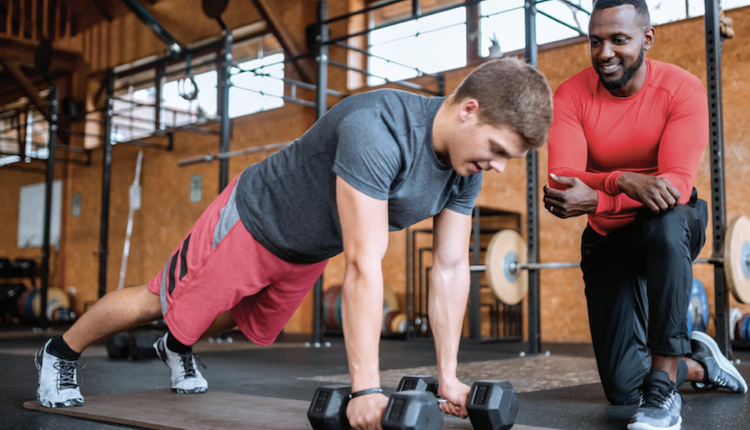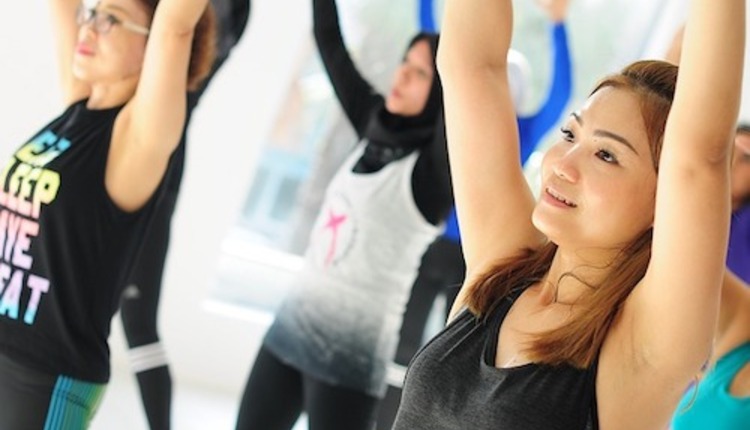Kids' programming has become an important tool in the fight against childhood obesity by encouraging kids to get involved in physical activity. But according to Sandy Coffman, author of Successful Programs for Fitness and Health Clubs (Human Kinetics, 2007), the most successful programs are those that require involvement of both the parent and child. "Society is dictating that it will be up to the individual to seek out fitness opportunities and to take the initiative to exercise regularly, so parents will take on the responsibility of developing exercise as a way of life for their children from day one," Coffman says.
Studies have shown that children who are brought up in a physically active world that combines creativity, imagination, and fitness challenges are more likely to participate and enjoy sport activities as they grow older and maintain a healthy lifestyle in adulthood. Coffman explains that this can be achieved through group environments where the parent and child learn with other children of the same age. "Just like adults, children respond best when they experience an activity with other kids like them-those with similar interests, skill levels, schedules, personalities, and ages."
For younger children, Coffman suggests offering a Yoga Bears class, which is designed for two- to four-year-olds and their parents. The class allows parents and children to work together by performing simple yoga postures and poses that aid movement, balance, and body awareness:
"Kids' programming classes are prime-time opportunities for developing the programs and membership," Coffman says. "Regardless of whether the program is for one day or a full week, it's sure to be a success for the kids and the club."
For more information on Successful Programs for Fitness and Health Clubs, contact Human Kinetics at 800.747.4457 or visit www.HumanKinetics.com.
Studies have shown that children who are brought up in a physically active world that combines creativity, imagination, and fitness challenges are more likely to participate and enjoy sport activities as they grow older and maintain a healthy lifestyle in adulthood. Coffman explains that this can be achieved through group environments where the parent and child learn with other children of the same age. "Just like adults, children respond best when they experience an activity with other kids like them-those with similar interests, skill levels, schedules, personalities, and ages."
For younger children, Coffman suggests offering a Yoga Bears class, which is designed for two- to four-year-olds and their parents. The class allows parents and children to work together by performing simple yoga postures and poses that aid movement, balance, and body awareness:
- Identify body parts and experience their movements.
- Experience the difference between moving in personal space and moving in general space.
- Recognize and move in various directions-right, left, forward, backward.
- Execute simple but specific locomotor movements such as walking, running, and jumping. Learn body control by starting, stopping, and holding still.
- Execute simple nonlocomotor patterns such as bending, reaching, pushing, pulling, stretching, turning, lifting, and twisting.
- Move to music-starting and stopping with music cues, for example, and reaching high or bending low with music cues.
- Use props such as soft balls to develop eye-hand coordination, hoops to learn space control, and balls or objects to kick. Learn how to catch, roll, bounce, bat, or toss a soft ball.
- Learn how to participate cooperatively in group activities by moving together-holding hands, sitting down and standing up, or moving a big circle in and then out. The group activity will teach emotional control, sharing, and patience.
"Kids' programming classes are prime-time opportunities for developing the programs and membership," Coffman says. "Regardless of whether the program is for one day or a full week, it's sure to be a success for the kids and the club."
For more information on Successful Programs for Fitness and Health Clubs, contact Human Kinetics at 800.747.4457 or visit www.HumanKinetics.com.











